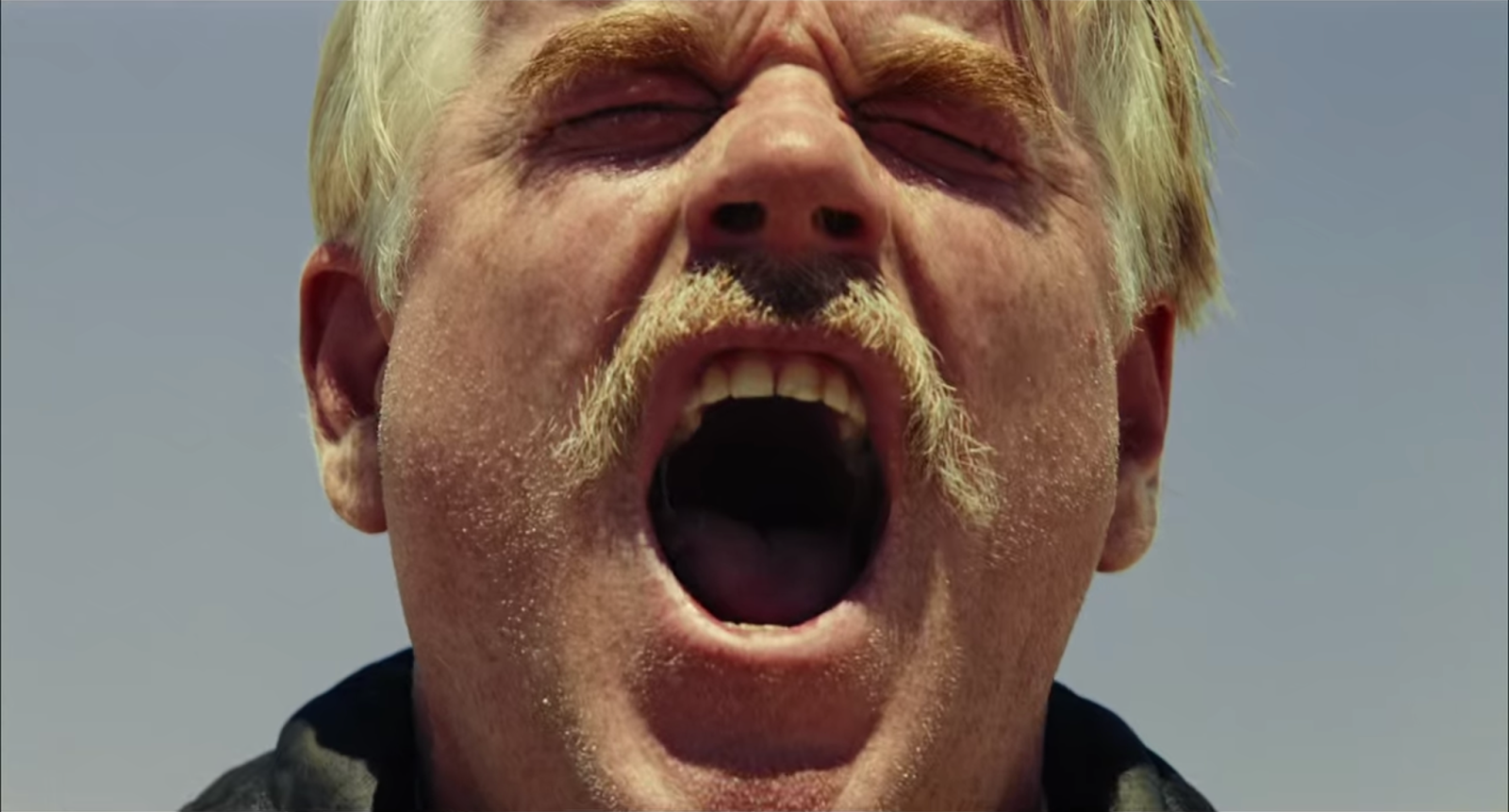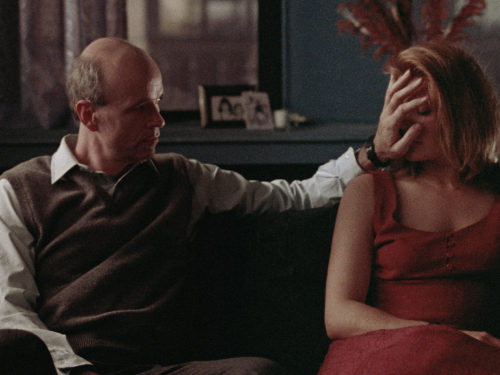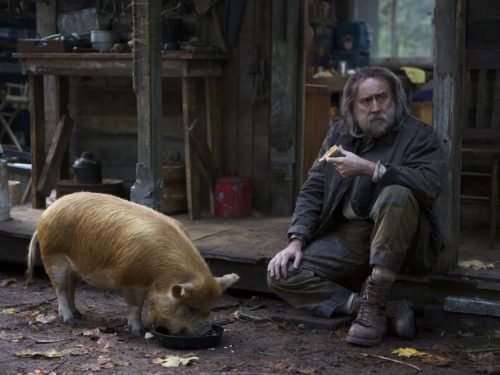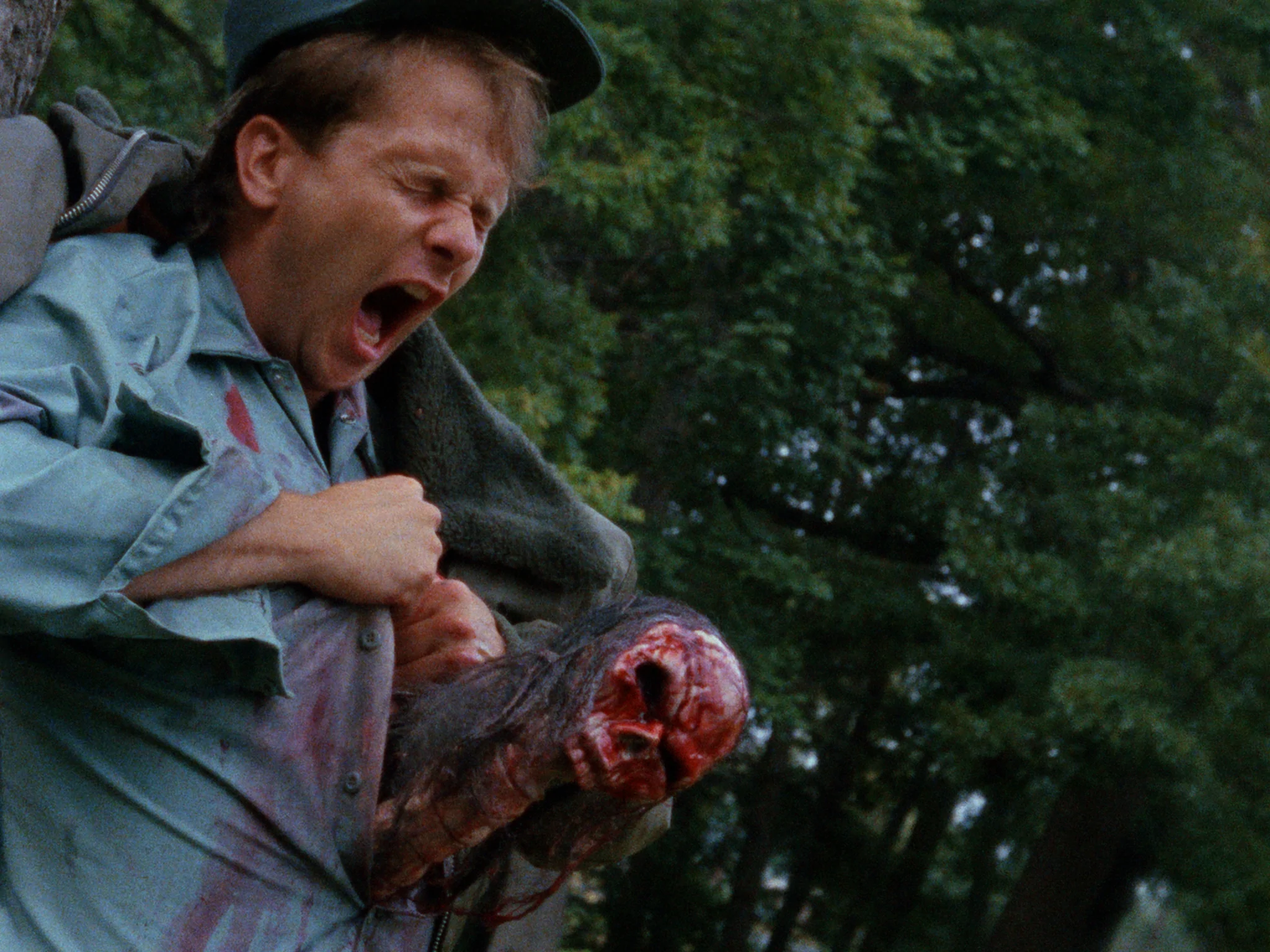“We are in the middle of a battle that’s a trillion years in the making, and it’s bigger than the both of us.” — Lancaster Dodd, The Master
It’s said that painter and visual artist Jeremy Blake took his own life by walking into the ocean. The story goes that he and his partner, Theresa Duncan, had been followed and harassed by members of the Church of Scientology. Duncan had been found dead, from an apparent suicide, in their apartment a week before Blake’s disappearance. Blake is remembered for, among other works, creating the vivid, abstract interludes, emblematic of his signature “moving paintings,” in Paul Thomas Anderson’s Punch-Drunk Love (2002). It’s possible that his tragic death in 2007 pushed Anderson’s interest in Scientology forward. What’s fascinating about the endpoint of this inquiry, which reportedly began around the turn of the century and climaxed with his 2012 opus, The Master, is how elusive and beguiling the film ended up being. It’s a complex, misshapen, and conflicted piece that confounds expectations. It’s not the full-throated Going Clear-style takedown of Scientology many expected, or even hoped for. It’s not a product of rage; it’s a portrait of human frailty, majestic and raw in its search for meaning in the postwar era.
Consider The Master the third part in an unofficial trilogy about religion and spiritual searching that includes Magnolia (1999) and There Will Be Blood (2007). Magnolia laid the foundation with a grandiose, overwhelming symphony of Old Testament suffering. Its interwoven stories are colored with cosmic coincidence, a patriarchal fixation, and, inevitably, a cleansing plague of frogs. It’s Babel transported to the present-day San Fernando Valley. There Will Be Blood shifted Anderson’s mythic themes to the California oil fields of the turn of the 20th century, where capitalism and evangelism became ensnared, dramatizing the symbiotic, parasitic relationship between religion and commerce as a titanic struggle. It’s a film of fire and brimstone, with a primitive energy and bludgeoning symbolism. Chronologically, The Master falls right between these two, in the midcentury vacuum where generational trauma begat new belief systems with unknown potential and peril. In times of profound uncertainty and upheaval, a single flawed man can create a theology that is a direct outgrowth and expression of his ambition and his anxieties, and it can find purchase. There is a lot of doubt and cynicism in Anderson’s outlook, but The Master is the most enigmatic, curious, and perplexing of the three, with its own internal logic and spontaneous, obscure motivation.
Related: Pig (2021): Revenge Thriller Tartare With A Nicolas Cage Consommé by Oliver O’Sullivan
In the context of Anderson’s career, from Hard Eight (1996) through Licorice Pizza (2021), The Master is paradoxically the purest and most prismatic expression of his narrative approach: setting two distinct (often volatile) characters/personalities on a collision course and marveling at their entanglement. It’s fitting that Anderson’s filmography begins with a story set in Las Vegas, where fortunes are made or lost in an instant. His films are about chance encounters and how these anomalies can reshape the arc of a story or the direction of a life. Anderson’s films turn on coincidence but are ambivalent about fate. So says Ricky Jay’s narrator during Magnolia’s opening trio of inexplicable tall tales: “This was not just a matter of chance. These strange things happen all the time.”
Anderson typically begins his narratives at or near the moment of convergence, when two people come into close proximity and are drawn into each other’s orbit: Sydney and John in Hard Eight; Dirk and Jack in Boogie Nights (1997); Barry and Lena in Punch-Drunk Love (2002); Daniel and Eli in There Will Be Blood; Reynolds and Alma in Phantom Thread (2017); and now Alana and Gary in Licorice Pizza. These are people with no shared history but there’s an instant connection; an undefined allure keeps them close. Magnolia and Inherent Vice (2014) are conspicuous outliers, but in their sprawl, there are subsets of pairings in the tangle of narrative threads. In The Master, it’s troubled veteran Freddie Quell (Joaquin Phoenix) rambling across the country circa 1950 until he encounters Lancaster Dodd (Philip Seymour Hoffman), purveyor of a mysterious and transfixing self-help philosophy/theology known as The Cause. The Master orchestrates a battle of wills driven by entropy, and it views their relationship as ageless, spanning time and space across many lifetimes. Freddie and Lancaster’s knotty codependency dictates the braided structure, like a biblical epic in the shape of a star-crossed romance.
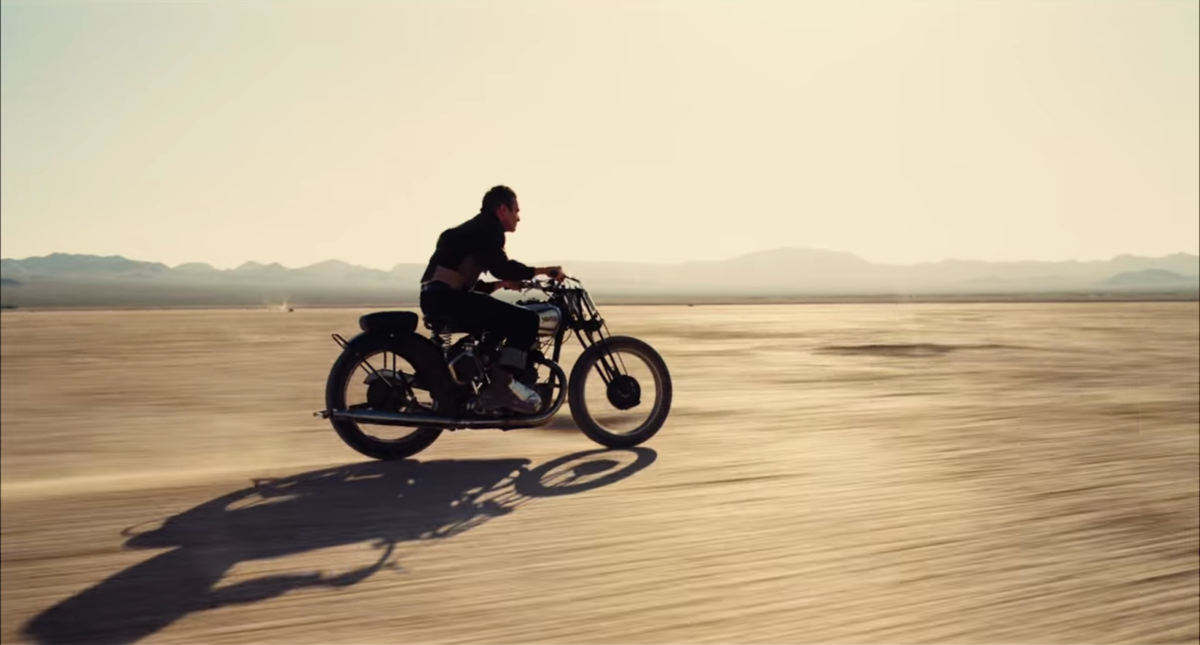
Shot in 65mm by frequent late-period Francis Ford Coppola collaborator Mihai Mălaimare Jr. (Youth Without Youth, Tetro, Twixt), the photography in The Master is stately and lightly psychedelic. It recalls the work of David Lean (motorcycles and desert, for starters), Jonathan Demme (a permanent reference point), and John Huston (with dialogue and images lifted wholesale from his wartime documentary Let There Be Light). Like a midcentury epic, it’s sweeping and atavistic, with grand compositions and motifs of earth, sand, rock, and sea. It was styled to look like the photography from vintage Pressman cameras, with the narrower 1.85:1 replicating the size of the squarish film stock. The variety in the shooting styles is remarkable but doesn’t call attention to itself: fluid high-speed tracking shots; screen-filling close-ups held at length as conversations unfold and fragment; framed compositions in keeping with the suspicious, insular community; sophisticated use of shallow focus, with racks that elegantly glide from foreground to background and vice versa; severe lighting reminiscent of portraiture or still-lifes. The script is riddled with cryptic dialogue that is suffused with a strange dark magic — impenetrable logic problems and feats of astronomical hyperbole that ricochet through your mind without resolution. Jonny Greenwood’s asymmetrical score follows suit, with more sonic variety and less terra firma than his others with Anderson, alternating between dissonance and jaunty melodicism, unease and playfulness, avant-garde and orchestral. There’s a science to The Master: bodies in orbit, fission, entanglement, displacement, actions and reactions. It starts out elemental and the mysteries multiply as new bonds are formed. The film gradually folds in on itself, with subtle slips in reality and shifting perspectives.
The Master starts in Genesis: on the beach, with Freddie at war in the Pacific Theater. We don’t see any combat, just the unstructured R&R of the platoon on a tropical oasis — ostensibly Guam. The churn of the turquoise water, the white-beige beachhead, and Freddie’s tortoise-shell navy helmet set the film’s palette within the first few shots. They seem to exist in a pre-Eve Eden, primordial and carnal, with a female figure literally carved from the earth. Freddie hacks into coconuts to make jug juice, defiles a mermaid that his clone comrades sculpted in the sand, masturbates into the sea, and drinks fuel straight from decommissioned torpedoes (a detail taken from an anecdote told by Jason Robards during the shooting of Magnolia). Our protagonist and the faceless, interchangeable men around him are driven by their vices and appetites. Defined by grunts, conflict, and free-flowing testosterone, it’s reminiscent of The Lord of the Flies by way of the “Dawn of Man” sequence in 2001: A Space Odyssey — the second time in a row that Anderson opened a film with a reference to Kubrick’s sci-fi monolith.
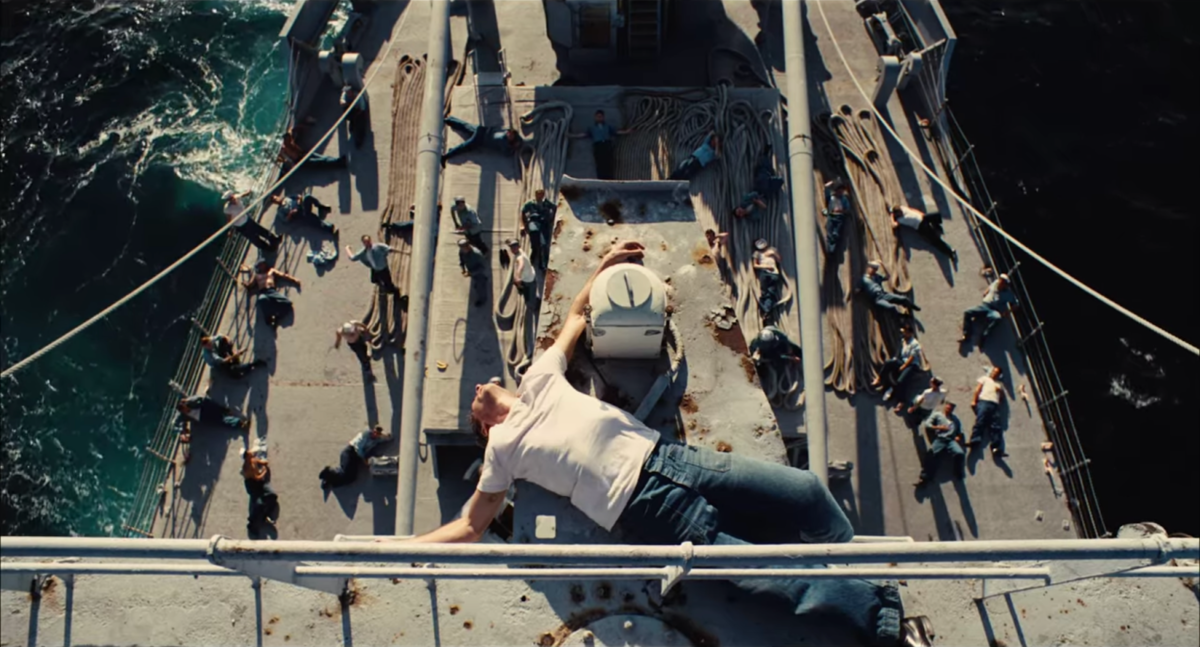
When Freddie returns stateside, he’s debriefed and analyzed, given a battery of psychological exams, including, crucially, a Rorschach test. With some combination of shell-shock and depravity, he’s released into the wild and reenters society on his own recognizance. The next five years are a blur, or maybe we jump forward in time — there are no signposts. He gets gainful employment as a photographer at a department store, where he cavorts with a coworker and swigs the chemicals in the dark room. After sabotaging this job by accosting and brawling with a customer, he moves on to itinerant agriculture fieldwork, plucking cabbages from the ground by day and mixing his poisonous cocktails for his fellow migrant workers in the evenings. He’s forced out when a bad batch kills one of them. He goes on the run and finds refuge as a stowaway on a nearby boat, hopping on just as it’s disembarking, with a boisterous party in full swing on the upper deck. The next morning, he’s brought before the leader of the throng: Lancaster Dodd — a composite character loosely, but obviously, based on Scientology figurehead L. Ron Hubbard. The two strike up a bargain: Freddie gets safe haven in exchange for mixing his stiff, toxic cocktails. Just like in There Will Be Blood, faith is an inherently transactional prospect, no matter how modest the pact. Lancaster is bankrolled by wealthy benefactors across the country and across the pond. He and his sect travel from New York to Philadelphia to Phoenix to England, and are hosted on their boats and in their houses. His philosophy is prized as a sort of boutique interest for their narcissistic pleasure — the romantic fascination of accessing fanciful past lives. The degree to which Lancaster tailors his teachings and the sessions to the desires of the benefactors is never clear.
Lancaster takes Freddie under his wing, as something of a pet project, a man whose baser urges rest close to the surface — a prototypical man-animal, in the Psychlo parlance from that other, less reputable 21st century Scientology film. In Lancaster’s eyes, Freddie might be an ideal subject for the next phase of his ever-widening, increasingly inscrutable doctrine. Incidentally, they may have also, in a previous incarnation, sent unguided mail balloons together for the Pigeon Post in Paris when the city was under siege, as Lancaster reveals at the very end of the film. Freddie, just like Dirk in Boogie Nights, Alma after him in Phantom Thread, and eventually Alana in Licorice Pizza, is held up as a model and a muse. But he’s also a shadow version of Lancaster — his dark mirror image and walking id. The radical idea that Anderson floats is that maybe Lancaster is onto something, that, apart from the bluster and showmanship, he seems to focus Freddie’s disturbed mind and help him, if only temporarily. Rejecting The Cause outright — as blatantly manipulative, fanatical, incoherent, improvised, and cruel — would deny the pain and damage of its adherents, a community of people who, in one form or another, are desperately seeking answers in a flawed belief system.
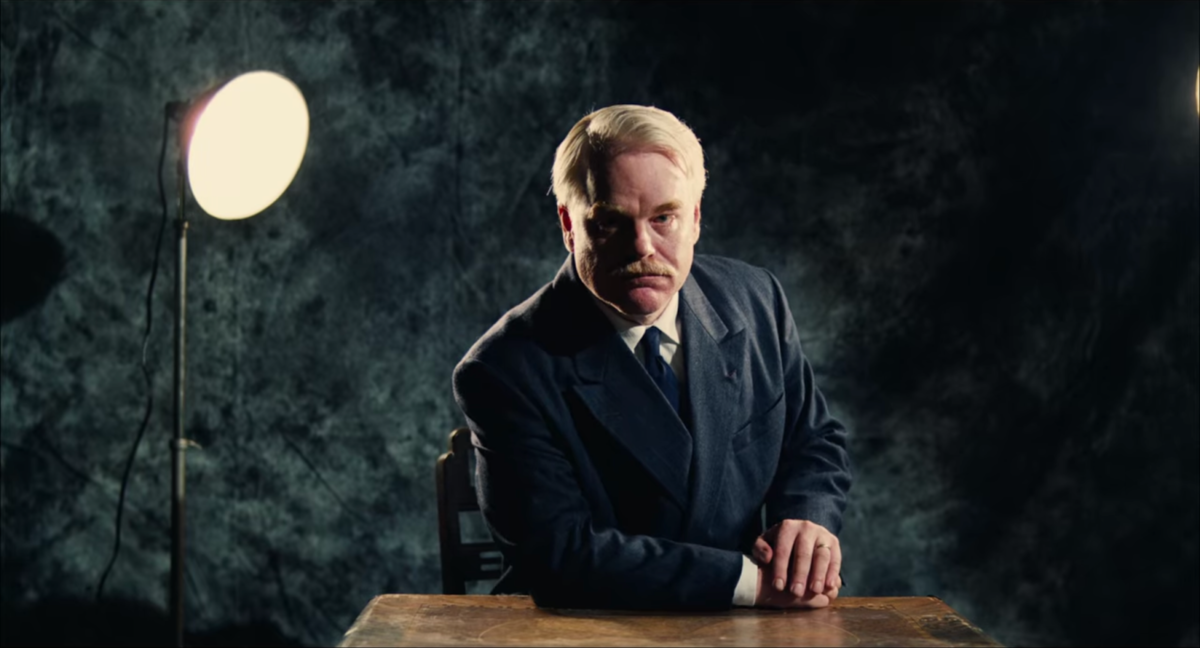
“You’re a seaman,” is the first thing Lancaster says to Freddie, emphasis on the double entendre. The profane sensibility that flourished in Phantom Thread, from the House of Woodcock on down, with its idiosyncratic tone and kinky predilections, began in earnest in The Master. But The Master is much more twisted and perverse. The first and last line of the film are bawdy jokes, Freddie first cracking himself up on the beach over his home remedy for crabs, then telling the woman he picks up at a pub to “stick it back in” in the last scene. The movie is rife with sexually charged wordplay, including Lancaster’s long-awaited second book, with the phallic-sounding title The Split Saber. All this prurience gives the film a bizarre, low-brow comic energy, but also a primal menace. Lancaster frequently addresses Freddie’s crassness by dehumanizing him, sometimes casually and other times scolding him like a dog. “This is acting like an animal, a dirty animal that eats its own feces when it’s hungry,” he says, berating him after he attacks a dissenter. Freddie’s physicality is an important indicator of his character. He’s unpredictable, predatory, confrontational, and potentially dangerous — “abberrated,” Lancaster calls it. His movements are simian, his speech slurred; his body swings strangely as he walks, hunched. His arms and elbows are akimbo when standing in place, cradling his torn-up kidneys. His clothes hang off his gaunt frame, belt synched high and tight; he looks feral, his limbs elongated and his core sunken. And the film seems to slip into his sexual fantasies, like the sequence where Lancaster leads a rendition of the traditional shanty “I’ll Go No More A-Roving (in G),” and Freddie, in a stupor, looks on as all the women in the room are suddenly naked. Freddie’s arc is defined by the attempts to tamp down his antisocial, self-annihilating impulses — just as his surname implies.
The mid-20th century is one of several inflection points in a filmography dominated by period pieces. Anderson’s infatuation with past eras makes the character collisions at the heart of his films feel like big bangs. In The Master, we’re witnessing the birth of a movement but more so the point when it becomes something more insidious. Lancaster scales his own Mount Sanai to retrieve his new scripture and usher in the next phase, pulling it straight from the earth with Freddie by his side. From this moment on, the narrative gets more jagged. Like many other Anderson films, The Master is a portrait — possibly even a self-portrait — of a gifted but tempestuous and tyrannical creator who bends time and space to his will and vision with little regard for collateral damage. Freddie behind his camera in The Master recalls Daniel Plainview surveying in There Will Be Blood or Kurt Longjohn (Ricky Jay) shooting on the porn sets in Boogie Nights, or Reynolds Woodcock peering through the peephole at his fashion show in progress in Phantom Thread, and all of these images surface the self-reflexive subtext. What makes Master Lancaster such a compelling figure is his poker face. He seemingly manifests theology in real time and creates therapeutic techniques out of thin air. It renders the cracks in the façade in sharp relief — the sudden “pigfuck,” his and Freddie’s shouting match across jail cell bars, his snapping at a follower over a word change in his newly published novel. Just as The Master is in conversation with past Anderson films, so too is it fixated on what it means to create and release a followup to a work with an outsized footprint. It’s implied that Lancaster has lost the plot with The Split Saber, and his agitation mounts, but still the movement grows, possibly taking on a life of its own.
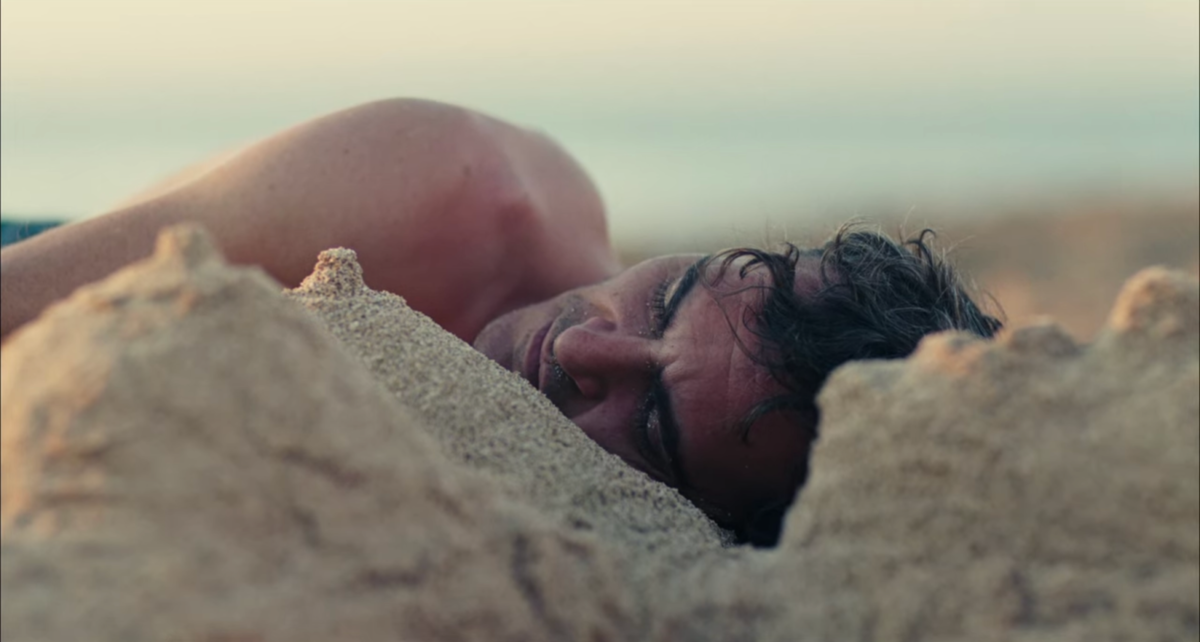
Wolves are at the door, calling Lancaster’s motives into question. What’s entrancing about The Master is that it both shares their suspicions but is enamored of The Cause’s fantastical ideas about astral projection. It is especially spellbound by the temporal anomalies of film as a medium. Before the concept of time is raised, ad nauseum, in conversation, Freddie experiences it in the all-important processing scene on the vessel Alethia. His mind travels back to Lynn, Massachusetts, to revisit his story with Doris (Madisen Beaty), the then-underage girl he left behind. They are vivid sensations, but, at the same time, his incongruous, aged presence in these flashback scenes makes them uncanny. “When we travel back in the timehole, there’s a different feel to another period in time that is so basic, it’s hard to describe,” explains Helen Sullivan (Laura Dern), one of Dodd’s patrons, describing how to tap into past lives more lucidly. But she’s also effectively describing the texture of the film itself, rich with period detail but also ineffably alien — a bygone era evocatively rendered with modern tools. Past, present, and future are slippery, overlapping concepts in The Master. Time as a concept, as a physical continuum that can be harnessed, tapped into, is a key element of the film. Several monologues and many lines of dialogue focus on the properties of time, its textures, rules, and limitations, and the ways to extract information and meaning from the slipstream of reincarnation. And with its final image, of Freddie back on the beach, curled up next to the sand woman, The Master creates a time loop.
There’s a brief scene in Licorice Pizza where Gary Valentine (Cooper Hoffman), having seen his crush, Alana Kane (Alana Haim), out with a rival actor, calls her house to see if she’s there after her date. She is, but when she answers, Gary hangs up. She reverse dials and the two just sit on the line without speaking. It’s a hypnotic moment that feels like it’s charged and elongated — a rare pregnant pause in a digression-heavy movie. And it recalls a late scene in The Master where Freddie takes a mysterious phone call from Lancaster beckoning him to England. At this point in the film, the narrative is drifting down a stream of consciousness. After disappearing on the horizon on the high-speed motorcycle ride in the desert flats, Freddie returns to Lynn looking for Doris. He learns from her mother that she’s married with kids — two boys, significantly. Immediately after Freddie realizes that her name is now Doris Day, we see him asleep in a movie theater. An usher brings him the phone and he has a brief exchange with Lancaster. In the next scene, he’s arriving at the school in England, a new outpost for Lancaster and The Cause. These parallel scenes in Licorice Pizza and The Master are moments of quantum, telepathic connection. The period settings crystallize them and make these transmissions feel peculiar and dreamlike. In Anderson’s films, an intimate conversation can contain the mysteries of the universe, whether words are exchanged or not.
The Rorschach blot is a key motif of the film, the jet-black material that spewed from the earth in There Will Be Blood splashed on an index card. The Master as a whole is an ink blot; it’s elliptical and meaning is in the eye of the beholder. Images like the churn of the sea, the mermaid in the sand, or Peggy Dodd’s (Amy Adams) eyes turning black are similarly abstract and open-ended. What the movie interrogates is easy answers. It’s fascinated by the nerve it takes to look another person square in the eyes and bare your pain. Accordingly, The Master is structured around therapy sessions. Most involve Freddie, as his psychology is dissected and he’s deprogrammed and reprogrammed by Lancaster. The film is fanatical about the power of repetition, to wear down defense mechanisms and discover hidden truths. The processing scene on the ship is the keystone to The Master. Lancaster tests a new approach, an intensive fusillade of intimate, nonlinear questions with the subject instructed to answer quickly and not to blink. It was the exchange that Anderson wrote first, taken directly from the real-life Scientology questionnaire, and it unlocks the themes of The Master. “The best way for me to start writing a story is to get two characters talking to each other,” he’s said. “And if you got questions from one, you’re gonna have to get answers from the other.” It’s a fundamental building block of film grammar: two people face to face, locked in conversation, alternating close-ups, the unpredictability of statements followed by reactions, the distinctly cinematic language of microexpressions. This is the centerpiece for The Master’s acting showcase. The rest of the film and the central relationship ripples out from this session. It’s a counterpoint to the profane Rorschach scene in the beginning of the film in the VA hospital. It’s a cathartic moment for both men — almost post-coital as they seal the exchange with a medicine-cabinet cocktail, Kools, and the optimism of Duke Ellington’s “Dancers in Love.” And the experience sticks in Freddie’s mind; he recreates it in mutated form with the woman from the bar in the last moments of the film.
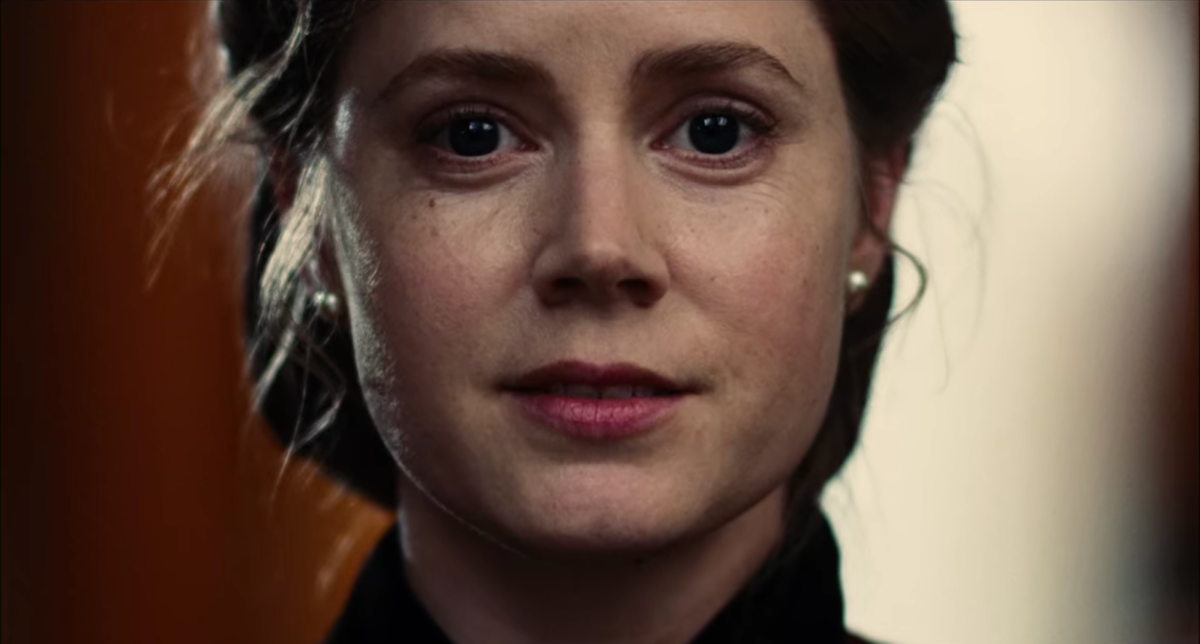
Each of Anderson’s films have a constellation of side projects where the themes spill over and are glimpsed in an alternative context. In the case of The Master, look to the briefly rekindled collaboration with former partner Fiona Apple. Anderson started directing her videos back around Magnolia and he bookends this trilogy of films by helming the video for the bare-knuckle single “Hot Knife,” from her breathtaking album The Idler Wheel… (2012). Apple’s incredible music stands on its own as transcendent art with a compelling point of view. But consider this song and its visuals through the lens of The Master and it serves as a recalibrated take on the central processing scene, with Apple as the sole participant. The stark, unblinking, face-to-face showdown is depicted through a symphony of split screens, close-ups, tight framing, and high-contrast lighting schemes reminiscent of the understated visual splendor of The Master. Anderson’s films are propelled forward by the uneasy chemistry of their character pairings, but, inevitably, the complications reflect back on each individual, privately wrestling with their failings and impulses. In “Hot Knife,” Apple makes her heart a CinemaScope screen, excoriating fragmented, kaleidoscopic versions of herself. She’s steely but vulnerable, tightly wound and consumed by desire, precariously counterbalancing lust and savvy; the song is propulsive, a tom-heavy “Genesis of Rhythm” that ties itself in knots. Side by side with The Master, it’s important to see these complex introspective themes from a female perspective. Men often take center stage — their anxieties, damage, downfall, and resurrection — but the women hold Anderson’s films together. Peggy Dodd falls in the lineage of canny survivors — Clementine (Gwyneth Paltrow) in Hard Eight to Amber Waves (Julianne Moore) in Boogie Nights to Shasta Fay (Katherine Waterston) in Inherent Vice to Cyril Woodcock (Leslie Manville) in Phantom Thread — who orchestrate the show from behind the scenes, adding texture and finesse. She whispers in Lancaster’s ear and methodically commandeers the movement. How this disturbs the surface of the narrative is an open question, as with so many of the loose threads of The Master. It’s a masterwork of unseen depths, a rich, open text, and a puzzle that is meant to be unsolvable. With The Master, Anderson erected the grand metaphysical epic he set out to create in 1999, finally completing his own century-spanning Book of Revelations.
Stay up to date with all things Split Tooth Media
(Split Tooth may earn a commission from purchases made through affiliate links on our site.)

